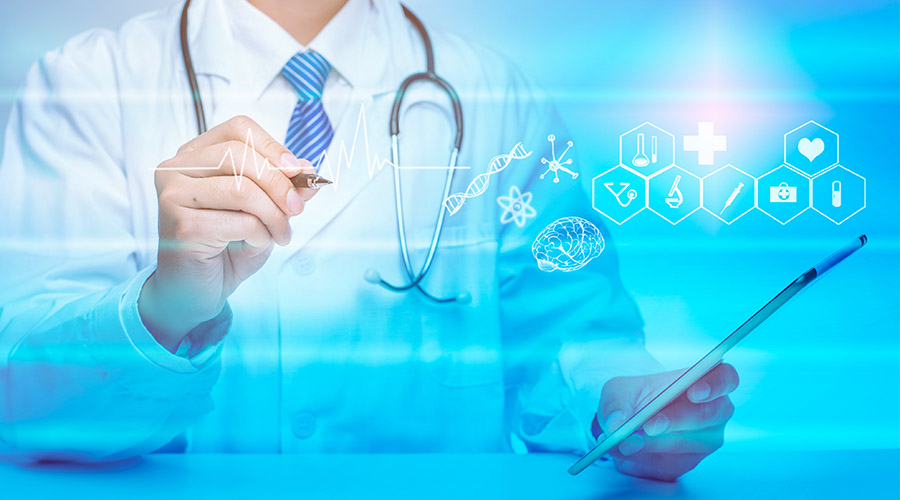
IoT is changing the healthcare industry, making people healthier, healthcare providers smarter, more efficient, and healthcare more affordable. With the increasing popularity of Fitbits, smart watches, and the Internet of Things (IoT), IoT sensor technology is beginning to have a real impact on the healthcare industry.
According to a recent study by Markets and Markets, the market for medical wearable devices is expected to reach $12.1 billion by 2021. These wearable devices are far beyond the scope of fitness tracking; new devices can monitor heart attack, stroke signs, and measure and control the insulin levels of diabetic patients.
However, ushered in a new era of innovation, IoT applications include everything from transportation and manufacturing to smart home control and automation, and even entertainment. It is worth noting that the healthcare industry also benefits from the Internet of Things. When applied to the healthcare industry, the Internet of Things carries huge potential. From drug management to patient monitoring, its uses are almost limitless.
Let’s take a look at how the Internet of Things is revolutionizing the healthcare industry. Let us look at it in detail.
Remote monitoring of chronic diseases
Continuous monitoring of patients at home is one of the most immediate benefits that the Internet of Things offers us. Patients of all ages are familiar with the use of mobile devices connected to the internet because they use them in many daily tasks. This allows healthcare organizations to increase their presence in the daily lives of patients without great training efforts in new technologies.
For instance, in a recent study of diabetic patients who made use of measuring devices, blood pressure, blood glucose, and pillbox are connected to the internet. And, the result showed that the device is capable of transmitting information about the medication taken by the patient, clearly showed the potential of the devices, of monitoring at home to help patients keep their health under control. The patients determined that the kits were easy to use and useful for their care, improving their disease management skills. The healthcare staff found the resulting reports beneficial for the control and follow-up of their patients, requesting the integration of the data in the patient’s medical history.
Data collection and analysis
Another fundamental way for the healthcare sector to use the Internet of Things is to collect and analyze data in an organized manner. Previously, although it was beneficial to obtain real-time patient records through multiple devices, it became very confusing because the data had to be manually analyzed by healthcare professionals. The use of IoT devices can make the work of healthcare professionals easier. These devices can not only collect and report data but also analyze them in real-time. Moreover, there is no need to store the original data. Besides, medical staff can also directly use the chart to access the final report, which considerably saves valuable time. All of this is done on the cloud, making the data available on the provider’s preferred device for the first time.
In addition, providers are using IoT devices to gain insights driven by data and important healthcare analytics. It helps make decisions quickly and reduces the scope of errors.
Mobile medical
Mobile medicine is also called mHealth, which is a way to observe and take care of the health of patients through mobile devices. It is a real life-saving straw for patients. Nowadays, almost everyone uses smartphones frequently. Mobile health is an emerging field, which contributes a lot to critical medical conditions and routine treatments. As already mentioned in the “Remote Patient Monitoring” section, mobile applications can be used as a management tool for health tracking devices. Such an application can serve as a comprehensive healthcare center, where people can access valuable medical information, analyze their physical behavior trends, manage other IoT sensors implanted in the body, and contact their doctors by clicking.
This is a particularly valuable solution for underdeveloped countries in the world, because in these countries, people rarely go to the hospital to see a doctor, but they are likely to have smartphones. The government, in turn, can understand the health of the population and accumulate a large amount of statistical data.
Conclusion
The benefits of the Internet of Things in the healthcare field are huge. In particular, when integrated with healthcare, the Internet of Things can be used to increase the efficiency of hospital operations, improve patient monitoring, and even provide accessible solutions for wearable technology. However, whenever the network connection works, there will be security issues, and the Internet of Things is no exception in the field of healthcare. Internet of Things devices is easily affected. Although people used to only care about patient data and compliance with regulatory requirements, they still need to care about the potential risks of hackers.
